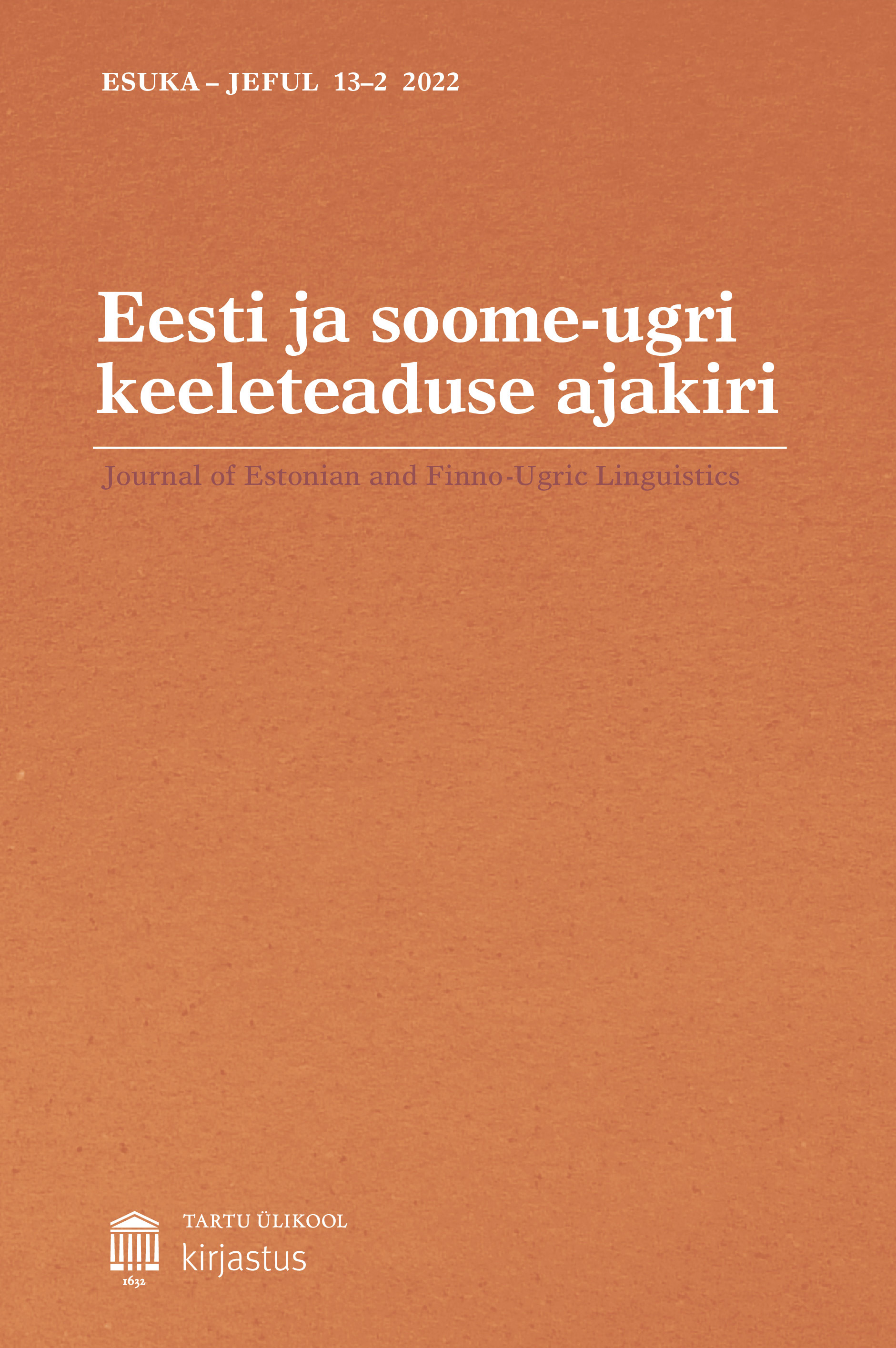The senses of illative and lative case in the Mordvin languages
DOI:
https://doi.org/10.12697/jeful.2022.13.2.10Keywords:
GOAL-cases, Mordvin languages, cognitive linguistics, conceptualization, semantics, specificity, sihikäänded, mordva keeled, kognitiivne lingvistika, kontseptualiseerimine, semantika, spetsiifilisusAbstract
Abstract. In this paper, I study the difference between the two goal-cases of the Mordvin languages, namely, the illative and the lative. A spatial case system with two productive goal-cases but only one case for each of the other spatial relations (i.e., location, source, and path) is a rare phenomenon in languages. To explain this situation, I study the semantics of the cases. I analyze the senses of the two cases, i.e., I study what meanings are expressed by them, and compare the semantic structures of the cases. Both of the cases are used to express mostly the same senses, but the frequencies of the senses differ between the cases. To explain this, I employ the concept of specificity. Specificity refers to the phenomenon where a relation between Trajector and Landmark is conceptualized as either more or less specific. The comparison of the semantics of the two cases reveals that the illative is used with more and the lative with less specific conceptualizations. In this paper, I study the difference between the two goal-cases of the Mordvin languages, namely, the illative and the lative. A spatial case system with two productive goal-cases but only one case for each of the other spatial relations (i.e., location, source, and path) is a rare phenomenon in languages. To explain this situation, I study the semantics of the cases. I analyze the senses of the two cases, i.e., I study what meanings are expressed by them, and compare the semantic structures of the cases. Both of the cases are used to express mostly the same senses, but the frequencies of the senses differ between the cases. To explain this, I employ the concept of specificity. Specificity refers to the phenomenon where a relation between Trajector and Landmark is conceptualized as either more or less specific. The comparison of the semantics of the two cases reveals that the illative is used with more and the lative with less specific conceptualizations.
Kokkuvõte. Riku Erkkilä: Illatiivi ja latiivi tähendused mordva keeltes. Käesolevas töös uurin erinevusi mordva keelte kahe sihikääne ehk illatiivi ja latiivi vahel. Kohakäänete süsteem, kus on kaks produktiivset sihikäänet, kuid ainult üks kääne teiste kohasuhete väljendamiseks, on maailma keeltes tavaliselt haruldane nähtus. Selle olukorra selgitamiseks uurin käänete semantikat. Analüüsin, milliseid tähendusi käänded väljendavad, ja võrdlen käänete semantilisi struktuure. Mõlemaid käändeid kasutatakse enamasti samade mõtete väljendamiseks, aga mõtete sagedused on käänete vahel erinevad. Selle selgitamiseks kasutan spetsiifilisuse mõistet. Spetsiifilisus viitab nähtusele, kus trajektori ja orientiiri vaheline seos kontseptualiseeritakse kas enam või vähem spetsiifilisena. Käänete semantika võrdlusest selgub, et illatiivi kasutatakse spetsiifilisemate ja latiivi vähem spetsiifiliste kontseptualisatsioonidega.


